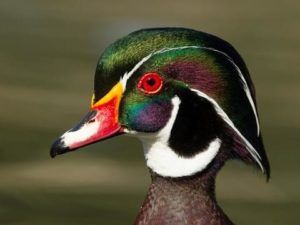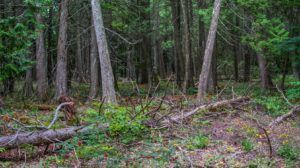MUCC attends Arbor Day Festivites
On April 26th, we celebrated Arbor Day. If you are unfamiliar, Arbor day is a day that people all over the globe stop and plant trees to help benefit the environment. This year Huron Pines AmeriCorps Member Autumn and I joined the Michigan Arbor Day Alliance (MADA) for their Arbor Day Celebration at Potter Park Zoo in Lansing.
This day celebrates all things trees, forests, and wildlife. It is a large undertaking that MADA has been hosting for decades. It also counts as the statewide Arbor Day Celebration and brings in over 1,000 students and their chaperones. There are trees planted and several stations for environmental education.
The day was a bit windy but the volunteers and presenters were dressed for the weather and when the kids arrived the piled off the buses and were ready to learn. There were more than 20 stations for the kids to rotate through and Autumn and I decided to split up and each run our own booth.
At my station, I had kids from Jackson, Portland, St. Johns, Holt and Lansing all rotate through during the day. Each group took part in a 20-minute presentation and as usual, I talked about waterfowl. However, since this was a tree-focused event, I talked about cavity-nesting duck species. Cavity-nesting ducks are unique in that unlike most ducks who lay their eggs on the ground, the cavity nesters lay their eggs in hollow trees or nest boxes built for them by people. Two of the cavity-nesting ducks I highlighted for the students were the bufflehead and wood duck. For my presentation, I take decoys of the ducks I am talking about, but we are also lucky enough to have a few mounts that I show to the kids and allow them to touch and get a hands-on feel for what feathers actually feel like and a closer inspection of a real duck.

While I was working with students on ducks, Autumn was a few booths away talking about deer. She fell in love with conservation through deer hunting and was excited to share her passion for conservation with the students. She had a hands-on table featuring a deer pelt, a jawbone set and a pair of antlers that she rattled for the kids. She also talked about the forest habitat type’s deer prefer and how mast-producing trees like oak are important food sources for deer.

Overall, it was another fun day in the field for the education team and we were happy to take part in the event. During a break, we even snuck off to the zoo and spent some time with the penguins and moose, so not a bad day at the office at all.
The post MUCC attends Arbor Day Festivites appeared first on Michigan United Conservation Clubs.



